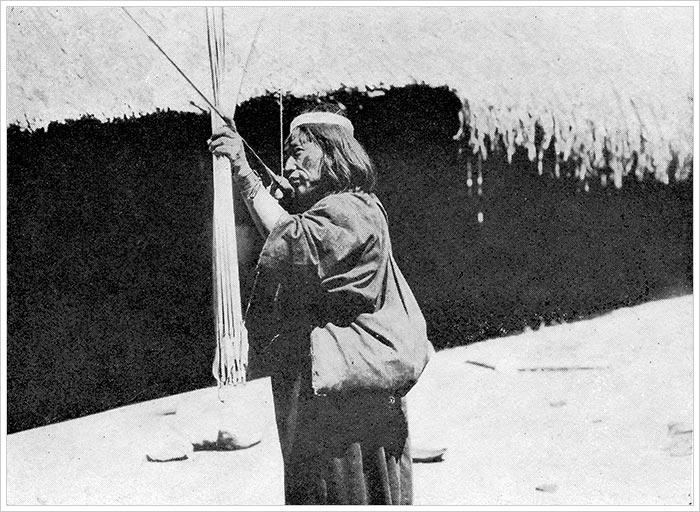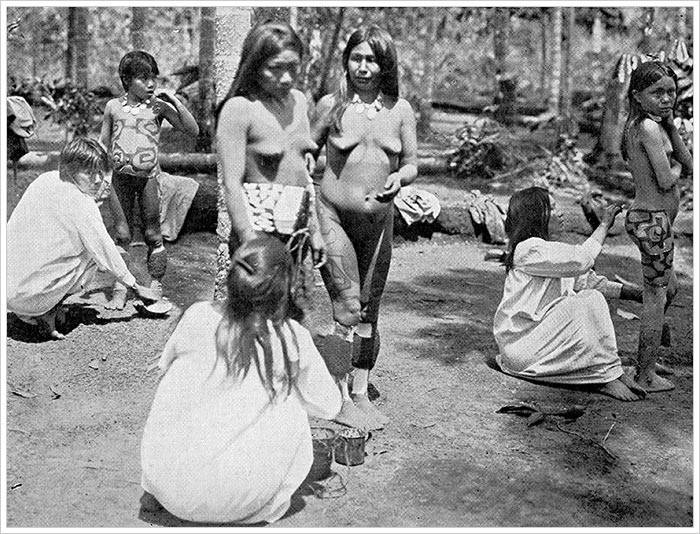Indian Poisons and Medicinal Plants, Part 6
Some of the most interesting chats I had with Father Francisco in the Nasca Valley, and subsequently aboard ship, had reference to the superstitions and beliefs of the Indians. Francisco had a rich store of information to impart, and he found in me an eager and willing listener. He was no less anxious to hear my experiences in connection with this absorbing subject. The one that he seemed to find most interesting occurred to me on the occasion of my first excursion to Sacambaja to try and locate the Caballo Cunco treasure.
About four hours’ ride from Palca, a little village on top of a hill which one passes through after crossing the river that runs down the other side of the Tunani Pass, I decided to give the cargo mules a rest while I had some lunch. Near by the stone on which I sat was a big rock. I was much surprised to notice that it bore the impress of a delicate female hand. As I pondered over this strange circumstance, an old Indian woman and three younger ones came down the path and stopped opposite the rock. From the old woman I learnt that about thirty years previously, as she was sitting outside her hut not far from this rock, the Virgin appeared to her. She was dressed in white apparel and had a halo round her head. The apparition lasted but a moment and as it disappeared stooped down and pressed one of her hands on the boulder. Next morning the impression was distinctly visible. One of the girls confirmed the old woman’s tale. She had heard it from her father who had witnessed the occurrence. All the Indians in the neighbourhood believed implicitly in the truth of the narrative, and the village priest also vouched for it.
I heard of an incident that was equally inexplicable in the Island of Trinidad, B.W.I., in 1915. Among my acquaintances I numbered one, Father Ambrose, the priest of Arouca and Tunapuna. I frequently visited him. One day he told me of a strange occurrence that had taken place the previous year. He said, “You have seen in our church the figure of the Blessed Virgin?” I assented. “Well,” the Father proceeded, “on the Friday before the Great War commenced, I was engaged in seeing that everything was seemly and in good order, when my attention was attracted to the sacred figure. I distinctly saw tears trickle down its cheeks. I was so astounded that I hurried from the church, jumped on my bicycle, and conveyed the extraordinary news to several members of my flock. They followed me back and witnessed the same amazing spectacle. The flow of tears continued for twelve hours, and then stopped.” Father Ambrose, although a man of the world, was not given to exaggerate. He told me this tale in all seriousness. I bought a photo of the sacred figure, taken at the time, and inspected a document, signed by eight or ten persons, in which the details of this mysterious occurrence were recorded. Arouca is not very far from Port of Spain, and Ambrose was cousin to the Abbot of Mount St. Bernard, a cleric who had migrated with his staff from Pernambuco. Ambrose was a very well-informed man, and I gleaned much information from him concerning various matters in which I felt an interest. He was able, for instance, to give me the history of the Brazilian Black Stone—better known, perhaps, as the Belgian Black Stone—an artificial product that is claimed to be a sure remedy for the bites of snakes, scorpions, etc.
Guavas and cauchus are plentiful in most parts of South America. A wine is made from cauchus much resembling champagne Cliquot. One day the Father was looking around for some of these fruits, when a poisonous snake stung his instep. An Indian immediately took a small quantity of black powder from a box that he carried, mixed it into a paste with his spittle and smeared it on the place. Much to Ambrose’s surprise, it proved entirely efficacious. Not unnaturally he tried hard to find out what the black powder was, but didn’t succeed for two years. Then he was told by a friendly Indian what the ingredients were. Ambrose soon procured a stock, and, after puzzling his brains, managed to fix them up into small stones about the size of a shilling. These he was able to dispose of readily at a dollar a time.
The stone was used in the following manner. When a person was bitten by anything poisonous the place was pricked until a drop of blood appeared. The stone was then applied to the puncture. Within about half an hour it would draw out all the poison. To restore the stone to its original condition, one had to place it in water for twenty-four hours. Soon the poison oozed out of the stone, and came bubbling up to the surface. A thorough soaking in milk was the next and final process. After this the stone was quite fit for use once more.
I can vouch for the efficacy of this stone when used for scorpion bite. Ambrose told me of many instances where it saved people from the evil effects of snake bite. He said all the ingredients were to be found near Arouca; so, being mindful of the main chance, he decided to see whether he could not introduce the stone to a larger clientele. His idea was to form a syndicate of three—himself, a chemist, and a Belgian doctor—and place the stone on the open market in considerable quantities. Half the profits were to go to the chemist. The residue Ambrose intended to divide between himself and the medico. I do not know what measure of success attended the venture. But some of the products got as far as England, for I came across one of the stones at St. Augustine’s College, Ramsgate, and I myself have two. One I applied to my leg when stung by a poisonous insect, with very satisfactory results, and a lady of my acquaintance succeeded in warding off the ill effects of a black scorpion’s bite with one of Ambrose’s products. In appearance the stones closely resemble pieces of blue-black coal, and are not at all like the blue stone sometimes used in agricultural districts for humoury legs.



